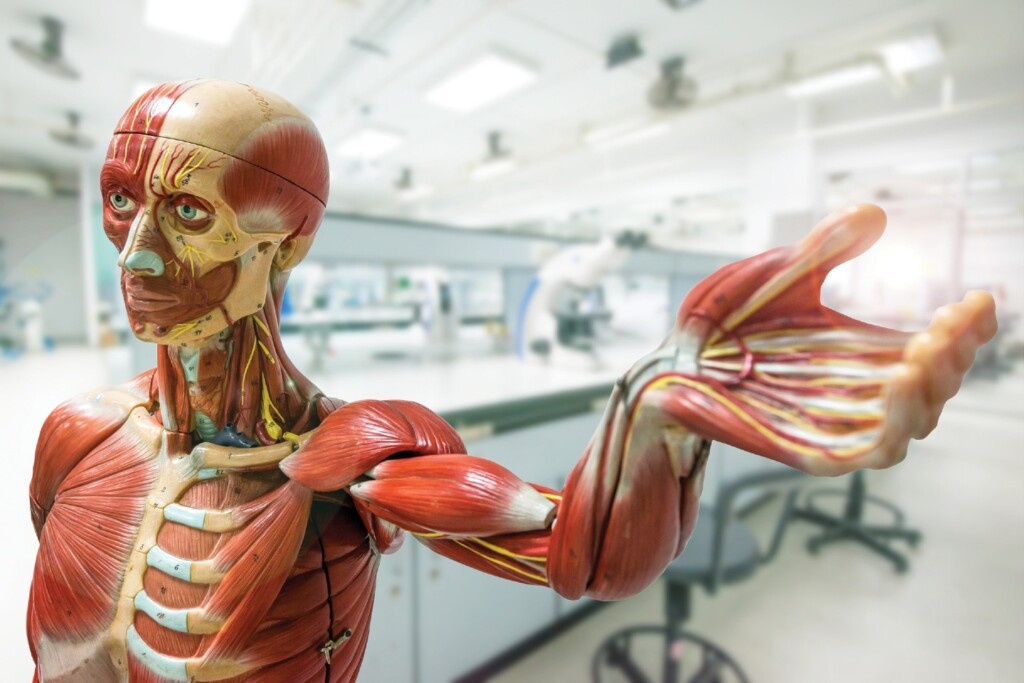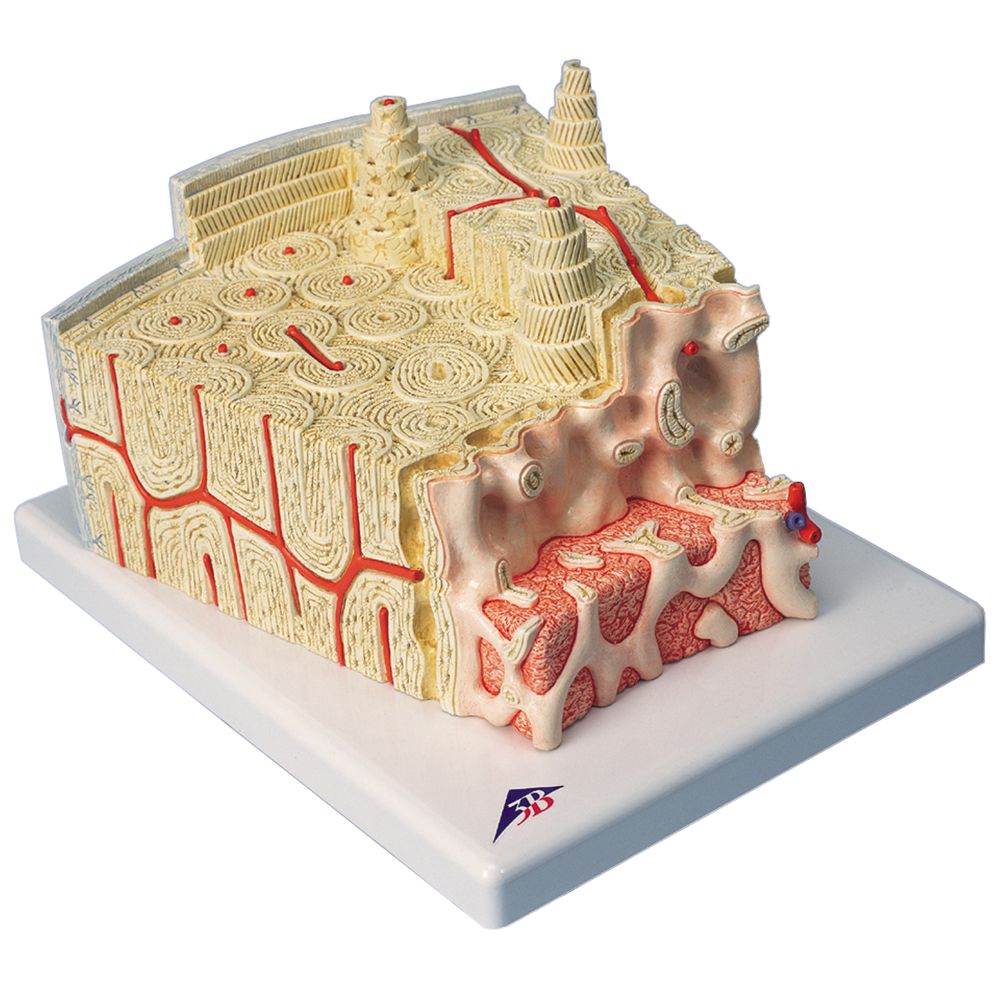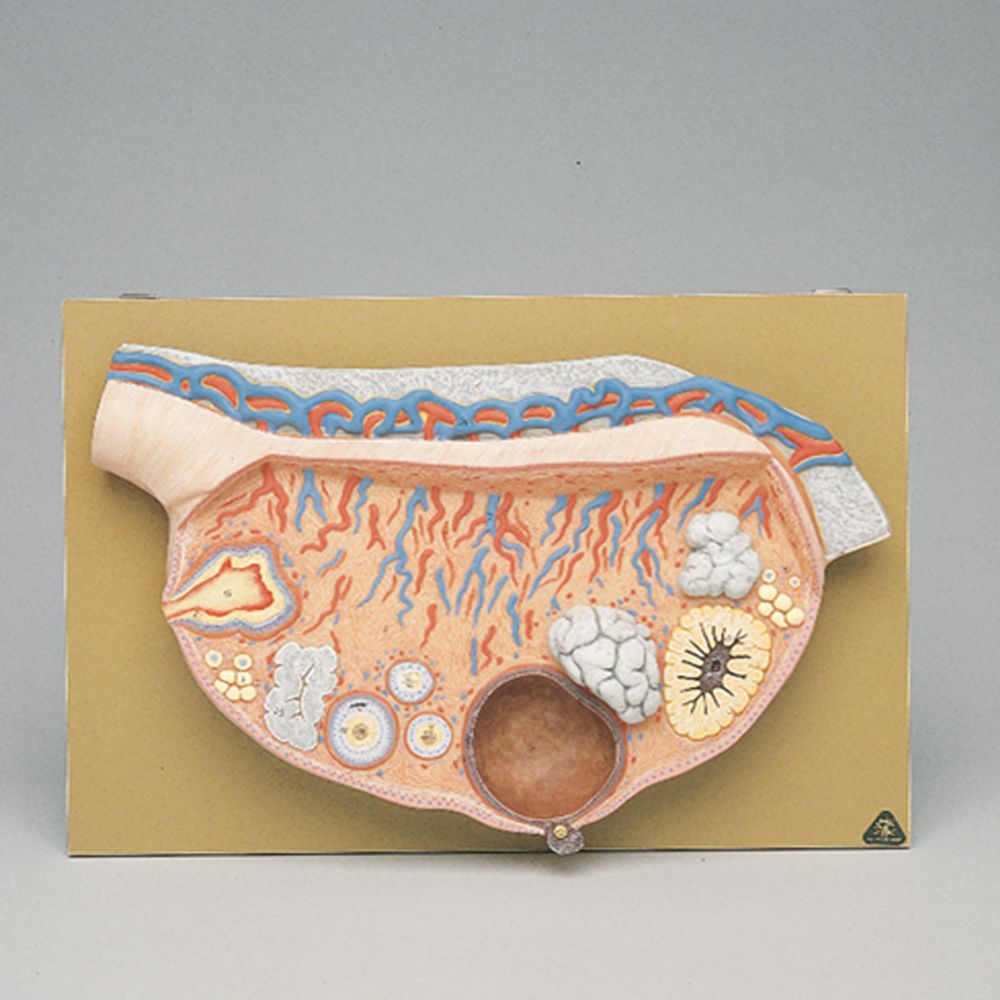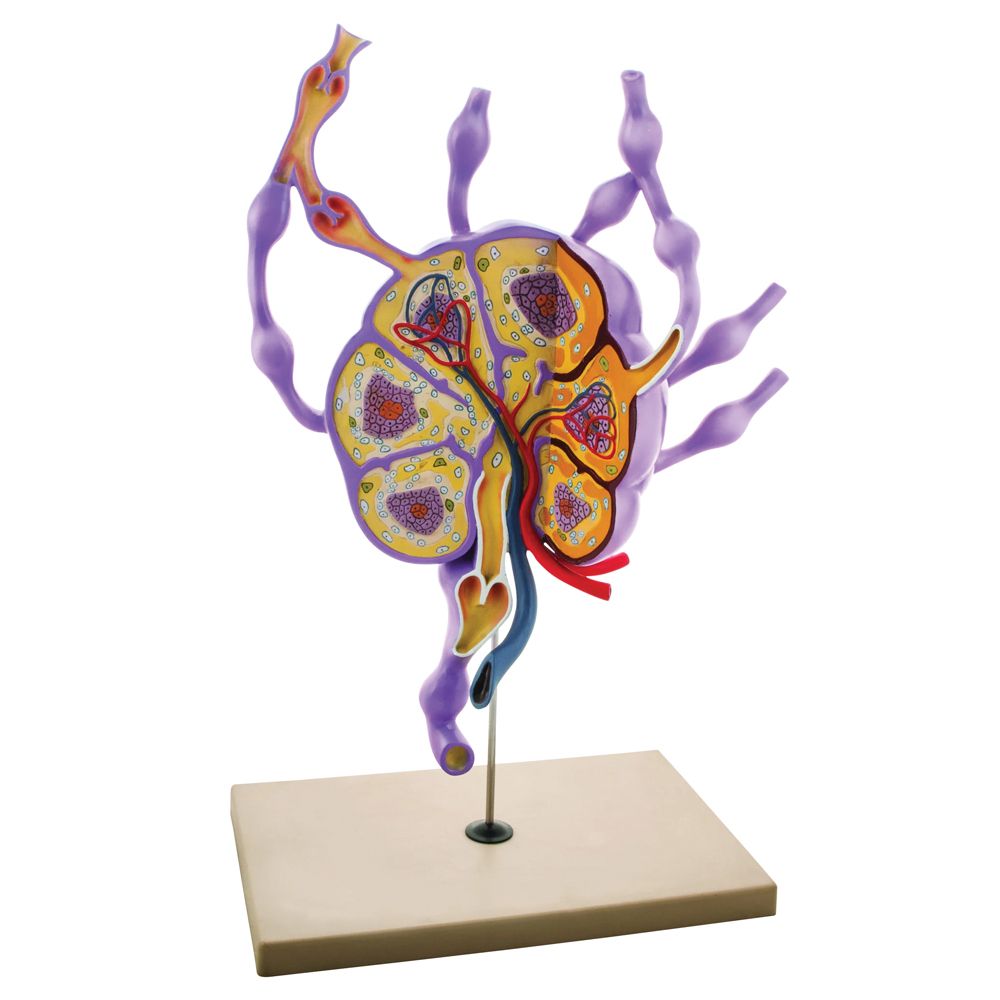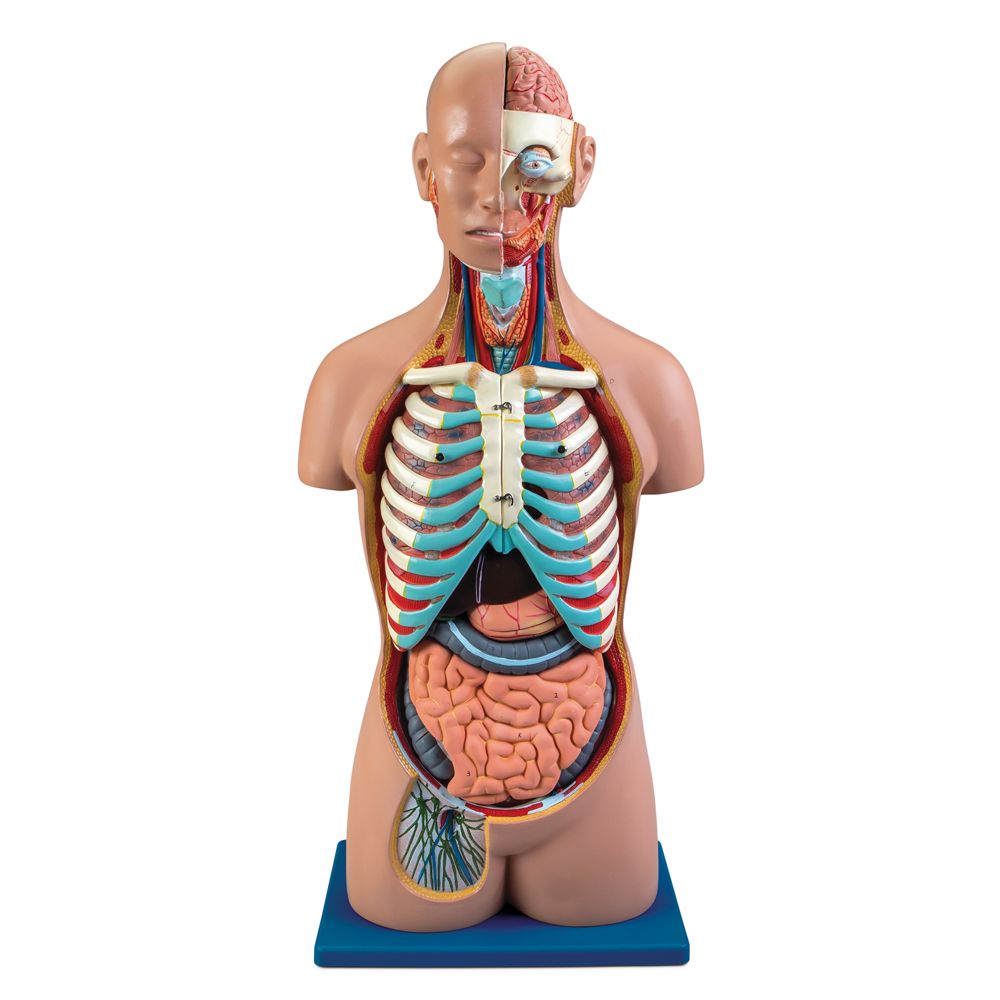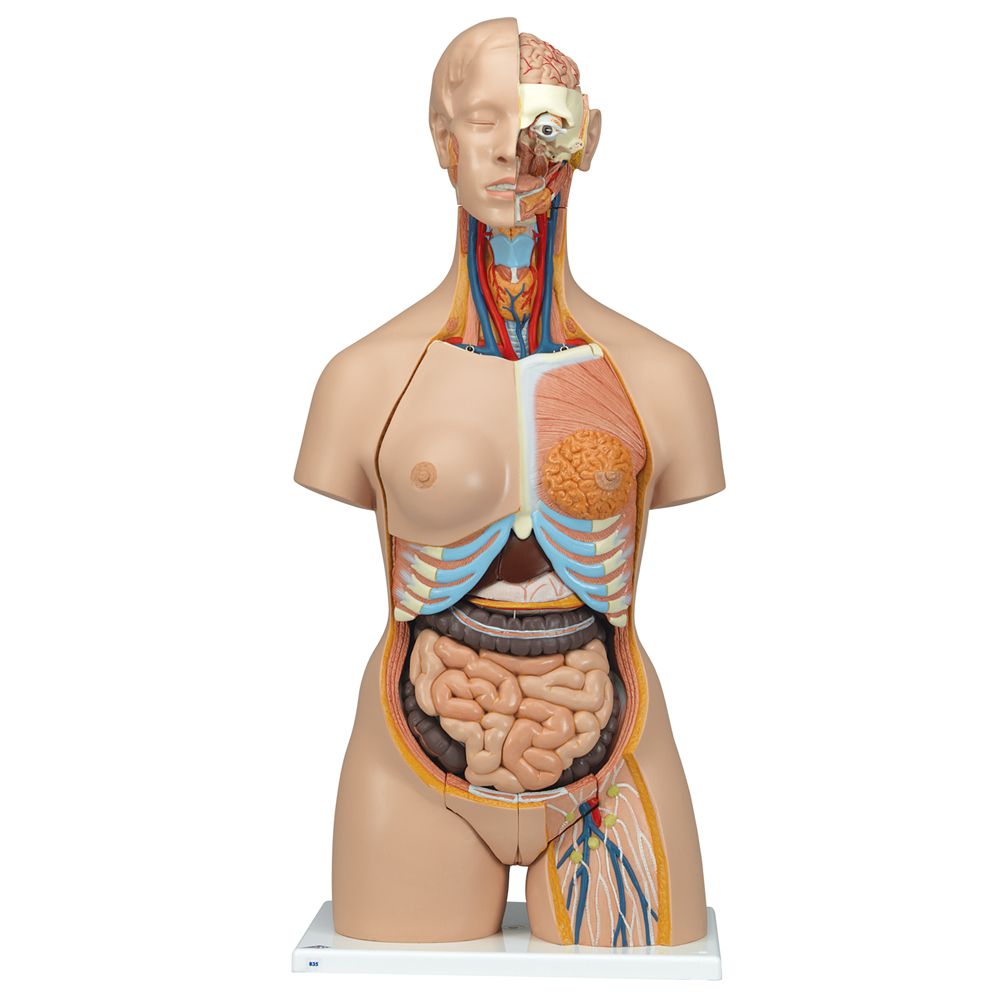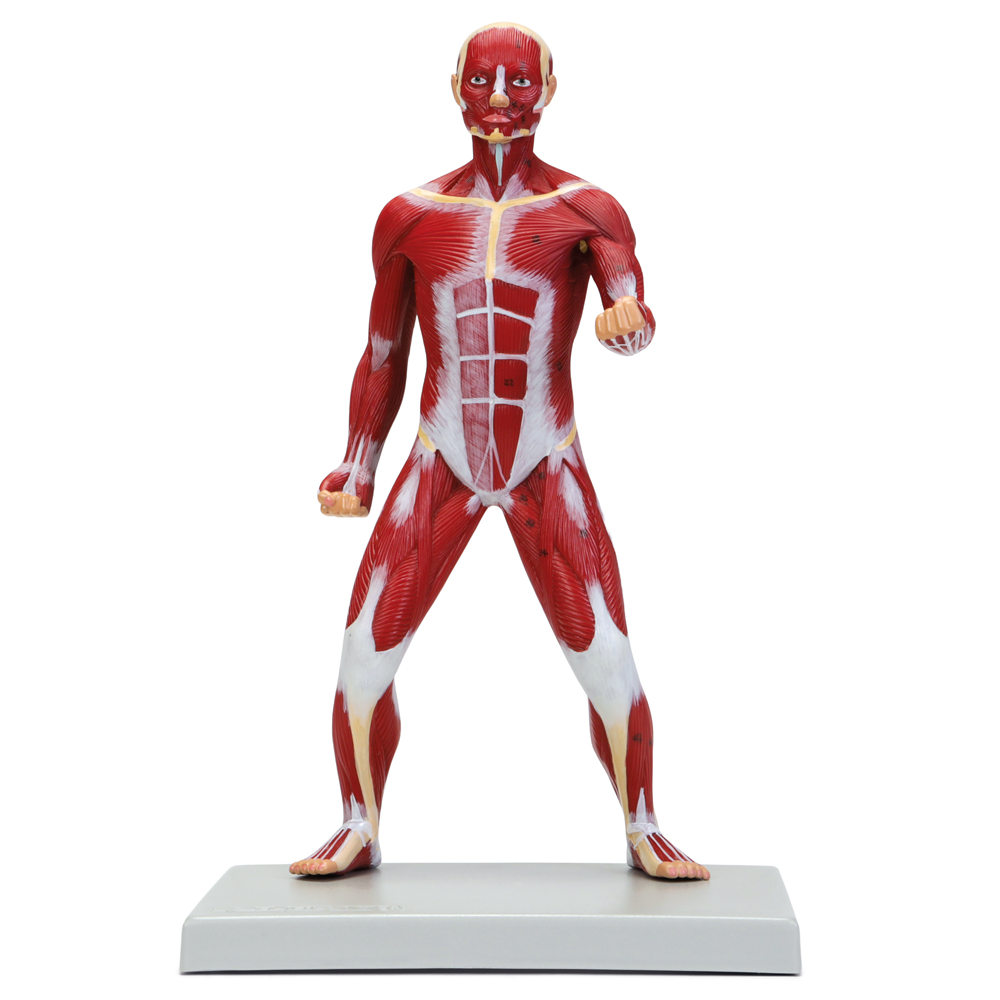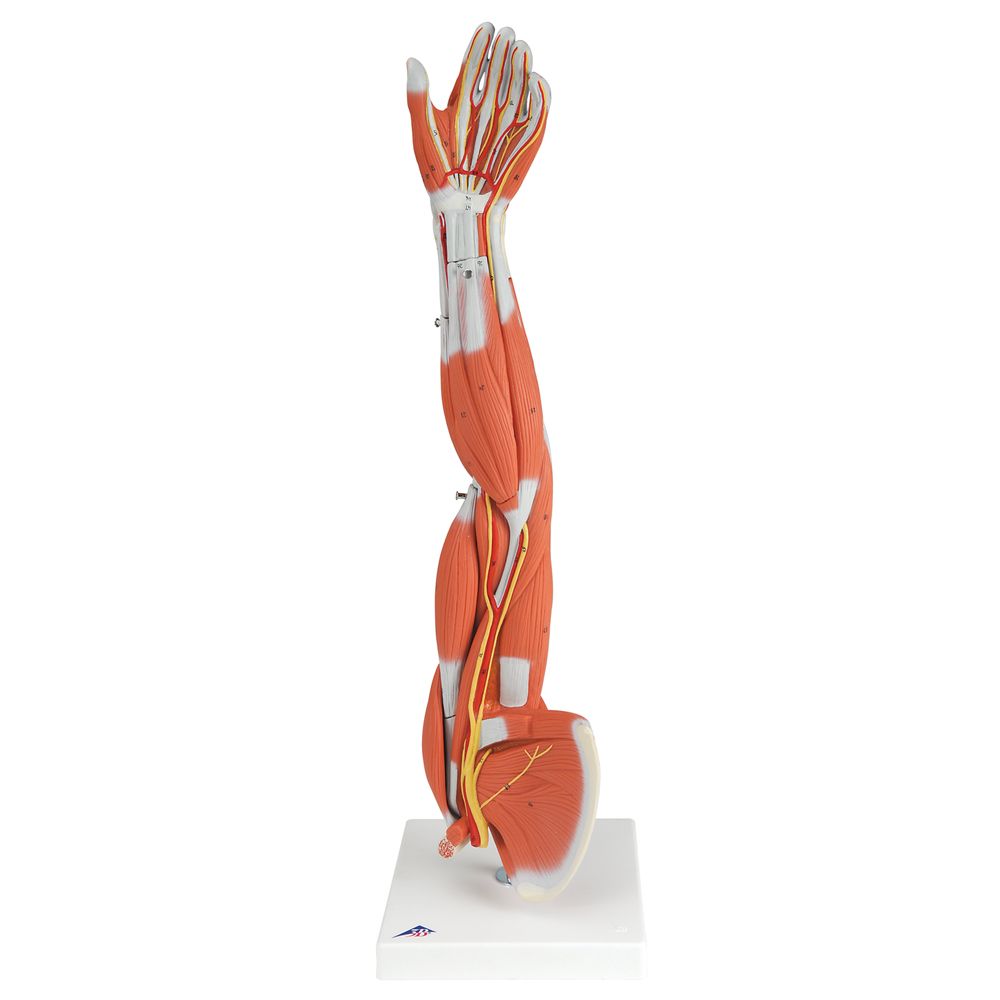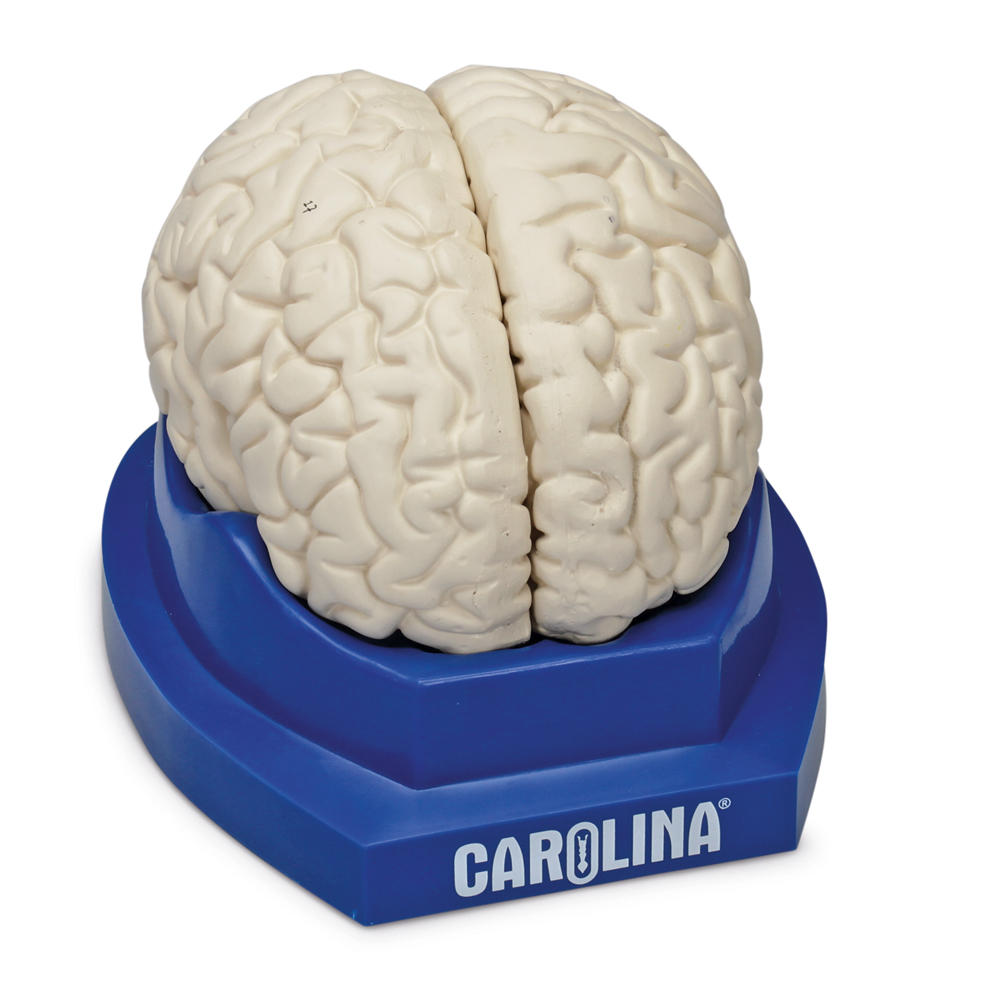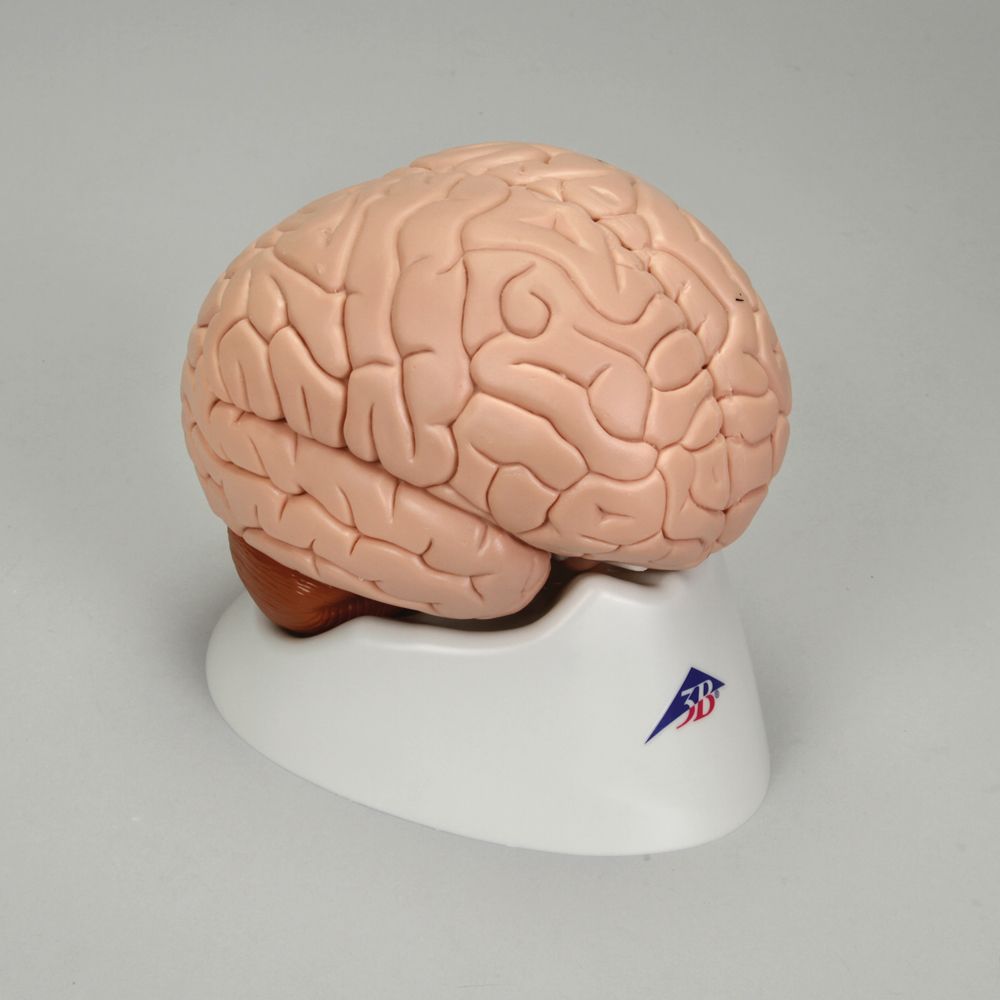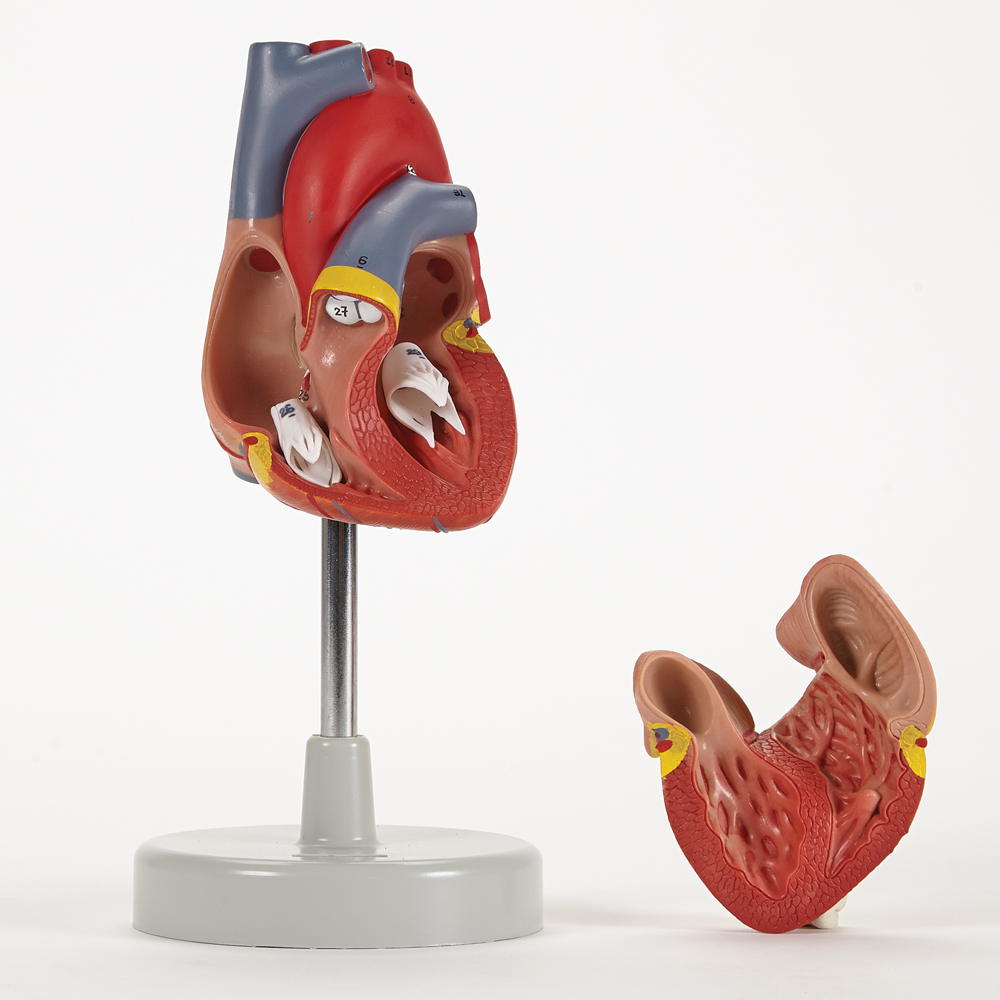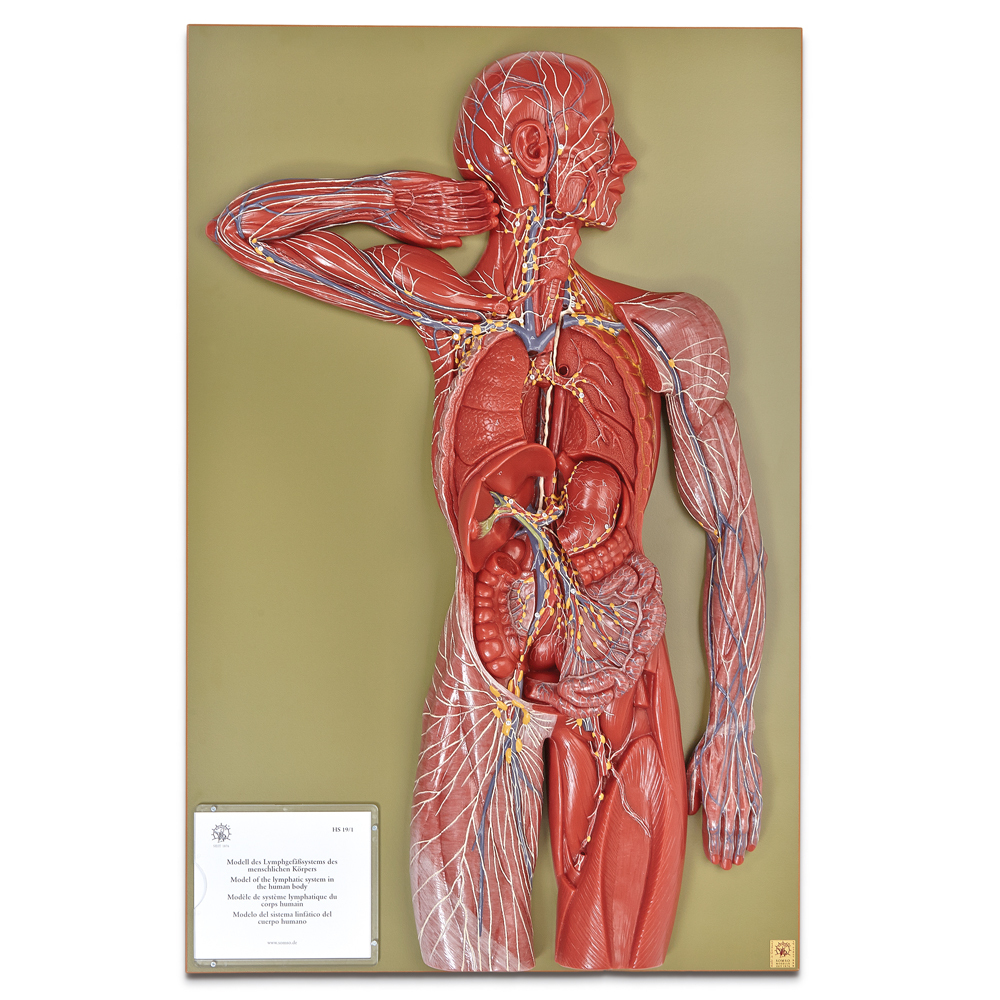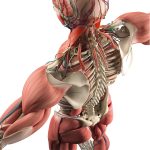Anatomy and physiology courses benefit greatly from the use of anatomical models and skeletons. Quality models show detailed morphology of organs and complete body systems. Models simplify the identification of anatomical structures, organ positioning within the body cavity, and the relationship between structure and function. Many models can be disassembled, allowing students to explore internal structures. Additionally, they are an excellent reference tool for identifying small and indistinct structures.
Anatomy and physiology is frequently organized and taught by body system. To help you plan and teach, here are our top-selling anatomical body system models. Click on the model picture or item number for more details.
Integumentary system models are valuable tools that can be used to teach the structure and functions of hair, skin, and nails. The Carolina® Enlarged Skin Model and the Somso® Human Skin Section Model provide enlarged, detailed cross sections that make it easy to visualize the dermis, epidermis, and subcutaneous layers of the skin and the structures within them. Check out our top-selling models for the Integumentary system, and choose the model that works best for your budget and classroom.
Using skeletal models in the classroom is a great way for students to visualize the structure and function of the bones that make up the skeletal system. Invite students to explore and manipulate each individual bone with the Carolina® Disarticulated Human Skeleton. Or take a deeper dive into the structure of the bone itself with the 3B® Bone Microanatomy Model.
Enhance students’ understanding of the muscular system using muscular models in the classroom. Many of these muscular models can be dissected, allowing students to view the superficial and deeper muscles. Models provide an engaging, hand-on approach to learning about the human muscular system. Check out some of Carolina’s most popular muscular system models, including the Atay® Miniature Human Muscular Figure and the 3B® Human Limb Models Set.
Help students visualize and better understand the nervous system by using models. The Carolina® Human Brain Model can be dissected into three parts, allowing students to explore the structures that make up this major complex organ. The Altay Human Nervous System Model gives a detailed view of the central and peripheral nervous system.
Using models that represent the organs of the endocrine system is a way to help students understand its structures and functions. The Altay® Human Endocrine Organs Model gives students an individual representation of each of the glands as well as the reproductive organs that make up this system. The Somso® Human Female Ovary Model demonstrates the anatomy of an ovary.
Get your students’ hearts pumping by incorporating cardiovascular system models in your classroom. The enlarged Carolina® Human Heart Model and the more compact Altay® Human Heart Model give students the ability to explore the heart’s external and internal anatomy. These models clearly show valves, cardiac chambers, and pulmonary and systemic vascular structures.
Give your students a tangible representation of the lymphatic system and its structure by incorporating lymphatic system models into your lessons. The Somso® Lymphatic System Model provides a detailed view of the complex network of lymphatic vessels, ducts, and lymph nodes. The Eisco® Lymph Node Model takes a macroscopic look at the internal structures of a single lymph node.
Reinforce students’ understanding of the human respiratory system by incorporating models. The Altay® Human Respiratory System Model takes students on a journey through the respiratory system and provides a closer look at the pulmonary alveoli, showing their association with terminal bronchioles and the capillary bed. The GPI Anatomicals® Human Lung Model offers a realistic view of the human lung and includes an open dissection for students to observe the lung’s internal structures.
Enhance classroom learning with digestive system models. The Somso® Human Digestive Tract Model gives student a complete view of the digestive system, allowing them to explore the organs and structures that make up this system. Then use the 3B Microanatomy of the Digestive System Model to take a macroscopic look at the fine-tissue structure of the esophagus, stomach, small intestine, and large intestine.
Urinary system models offer students a hands-on approach to understanding the anatomy and physiology of the kidneys, ureters, bladder, and urethra. By interacting with these models, students gain a better understanding of processes such as filtration, reabsorption, and excretion. Check out some of our best-selling models, including our Carolina® Human Kidney Model and the Altay Deluxe Kidney and Adrenal Gland Model.
Reproductive systems comprise multiple intricate organs and processes. Reproductive system models provide a visual aid to enhance understanding, enabling students to better grasp human reproductive anatomy and physiology. Some of our most popular models, such as our Carolina® Male Half Pelvis Model and the Somso® Human Female Half Pelvis Model, provide detailed cross-sectional views of the male and female reproductive systems.
Human torso models offer a comprehensive view of internal organs and their orientation within the human anatomy. They encourage hands-on exploration that leads to a deeper understanding of the relationship between organ systems as well as the different structures and their functions. Our bestsellers include the Carolina® Human Sexless Torso Model with Open Back and 3B® Human Male and Female Torso Model.
Anatomy and physiology courses benefit greatly from the use anatomical models and skeletons. Quality models show detailed morphology of organs and complete body systems. Models simplify the identification of anatomical structures, organ positioning within the body cavity, and the relationship between structure and function. Many models can be disassembled, allowing students to explore internal structures. Additionally, they are an excellent reference tool for identifying small and indistinct structures.
Anatomy and physiology is frequently organized and taught by body system. To help you plan and teach, here are our top-selling anatomical body systems models. Click on the model picture or item number for more details.
Integumentary System

Greatly enlarged, this model shows a variety of sensory receptors, as well as the structure of a hair follicle. Layers of the skin can be seen as a cross section and as cutaways at the top of the model. The stratum lucidum is also included to represent thick skin.

This greatly enlarged, block model shows features of epidermal, dermal, and subcutaneous tissues in detail. Sensory and vascular structures, sweat and sebaceous glands, and hair follicles (with and without piloerector muscles) are well represented. Front of hair follicle removes to show internal details.
Skeletal System
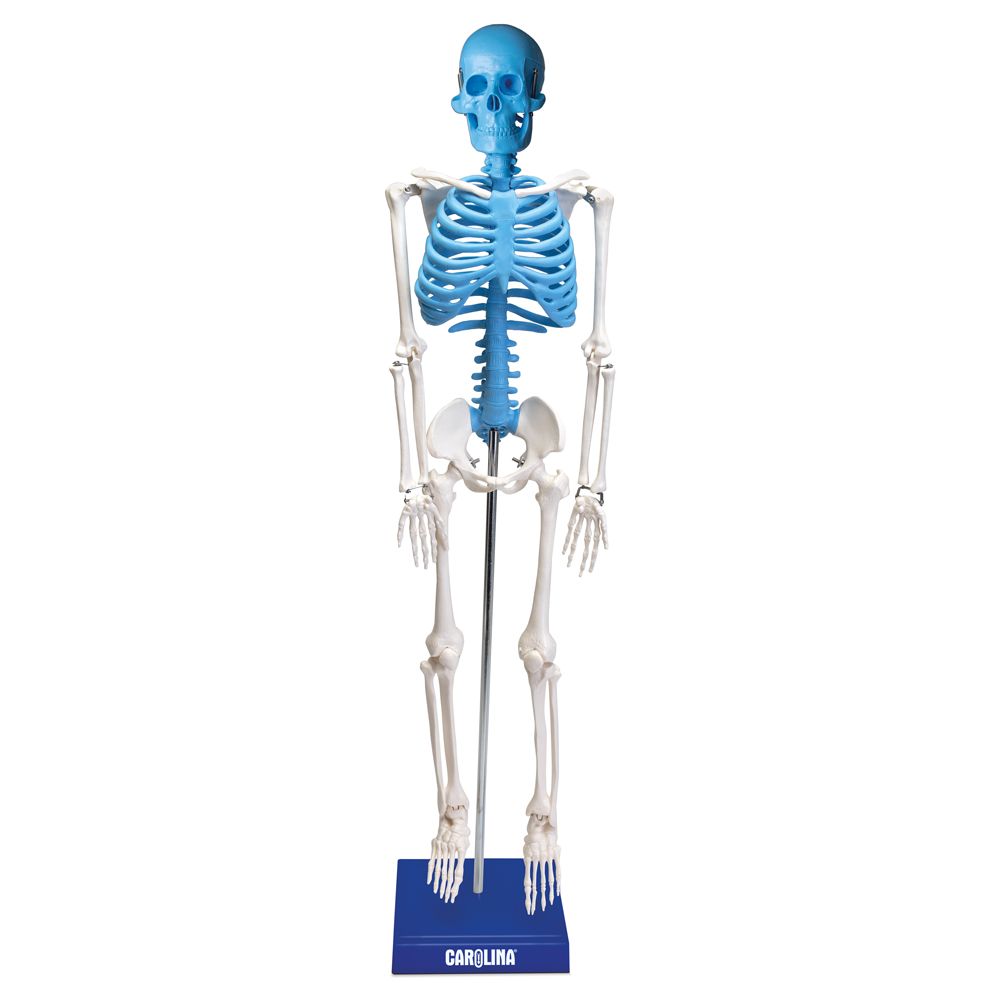
This miniature skeleton stands approximately 85 cm tall and includes a removable skull cap and hinged jaw. There is articulation in the joints. The axial skeleton is in blue, the appendicular skeleton in white, to more easily distinguish the different bones.

Constructed of a durable, unbreakable synthetic material, this skeleton is articulated to show normal posture; the extremities are removable; and the 3-part detachable skull has a cut calvarium, a spring-held lower jaw, and 32 individually inserted teeth.
Muscular System
Nervous System
Endocrine System

This plaque mount features almost life size, individual representations of pituitary, adrenal, thyroid, and parathyroid glands, plus a testis and a dissected ovary with fallopian tubes and associated structures.
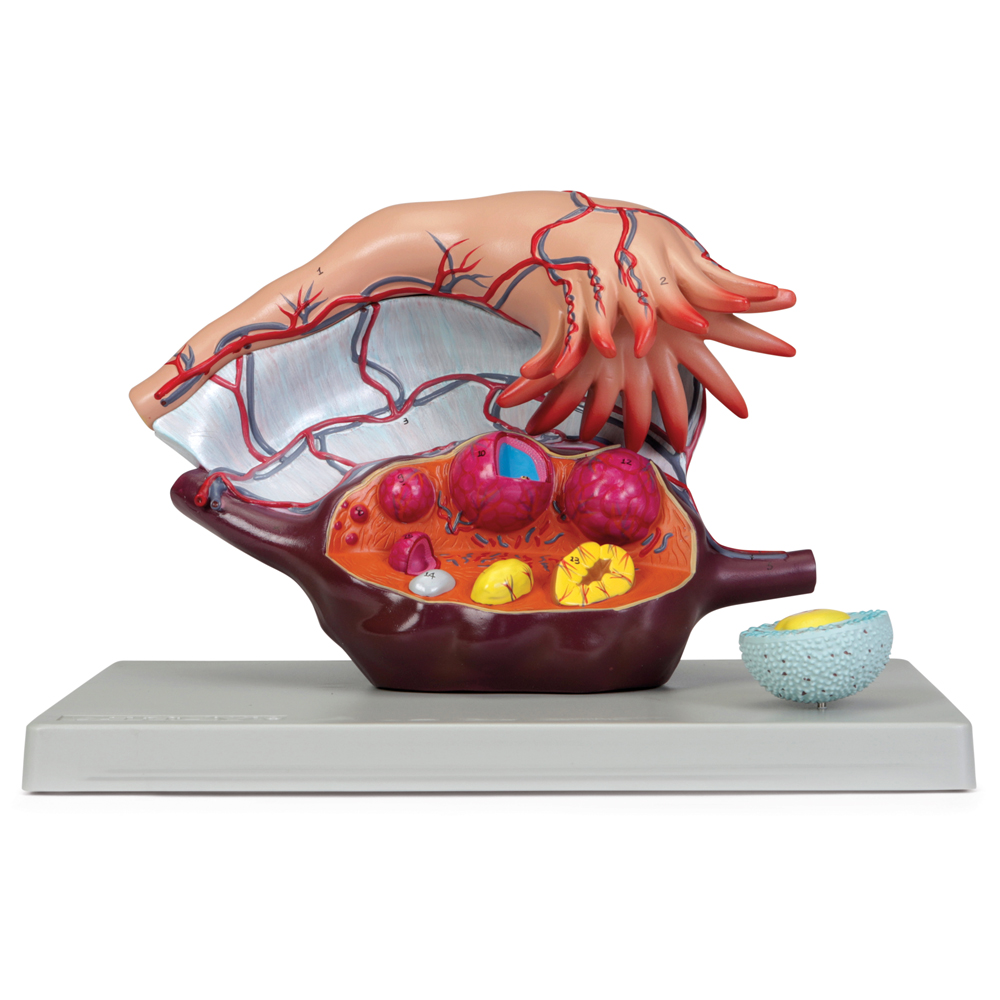
An ovary, almost life size, with removable fallopian tubule shows vascular and suspensory structures. The ovary is sectioned to show follicles at various stages of maturation, from the primary ovarian follicle to the corpus luteum and corpus albicans.
A primary follicle is cross-sectioned to reveal details of the oocyte and zona pellucida.
Cardiovascular System
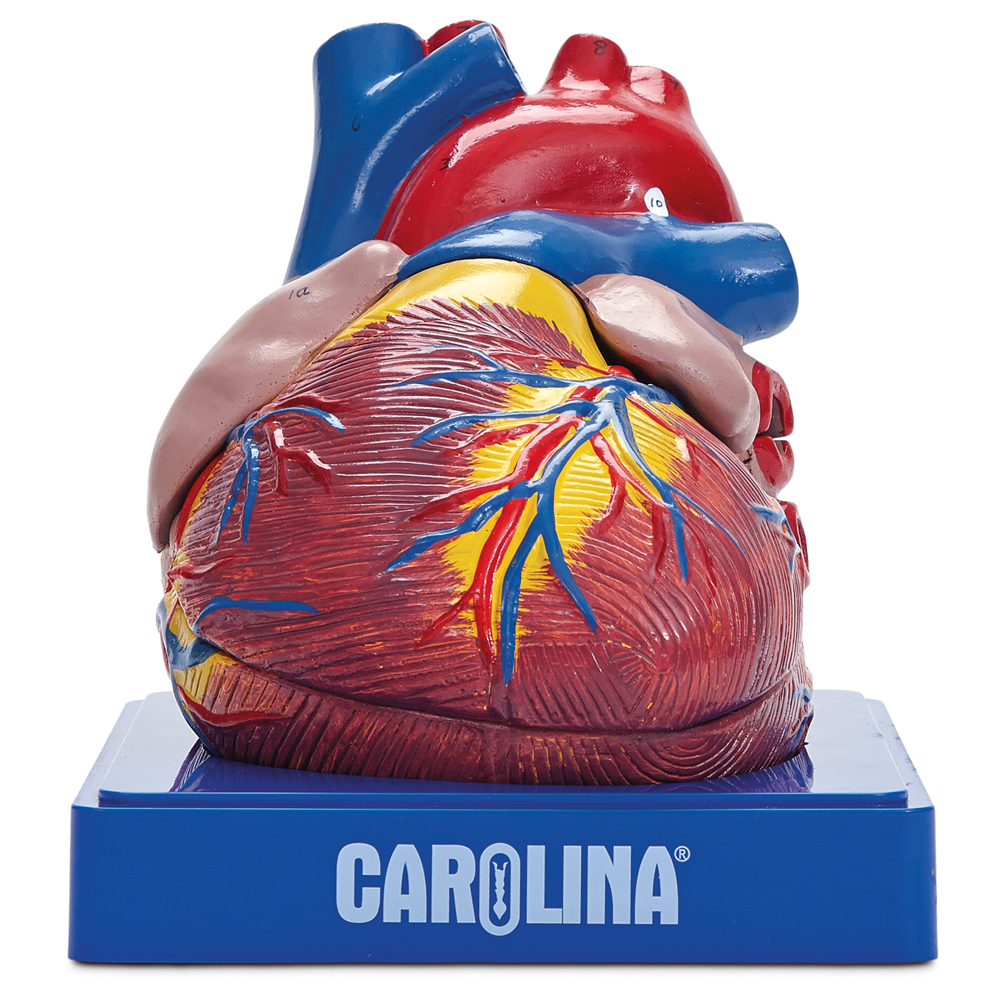
This 2× life size, 3-piece model of the human heart is enlarged for enhanced detail of internal and external structures and identifies 30 structures, including the coronary arteries and veins. The anterior portions of the ventricles and the atria are removeable.
Lymphatic System
Respiratory System

Two-part model shows respiratory airway structures from the nasopharynx to the terminal bronchioles of the right lung. Surface view of left lung shows superior and inferior lobes. Highly magnified representation of pulmonary alveoli shows association with terminal bronchioles and capillary bed.
Digestive System

This 1/2× life size model shows common pathologies of the human colon. The ascending, transverse, descending, and sigmoid colon are depicted. Cross sections of the transverse, descending, and sigmoid colon show the following common pathologies: ulcerative colitis, diverticulitis, bacterial infection, cancer, polyps, and more.
Urinary System

This life size, 2-piece model represents the right human kidney and adrenal gland. The anterior portion is removable to reveal the internal structures of the kidney. The renal artery and vein are shown, as well as the proximal end of the ureter.
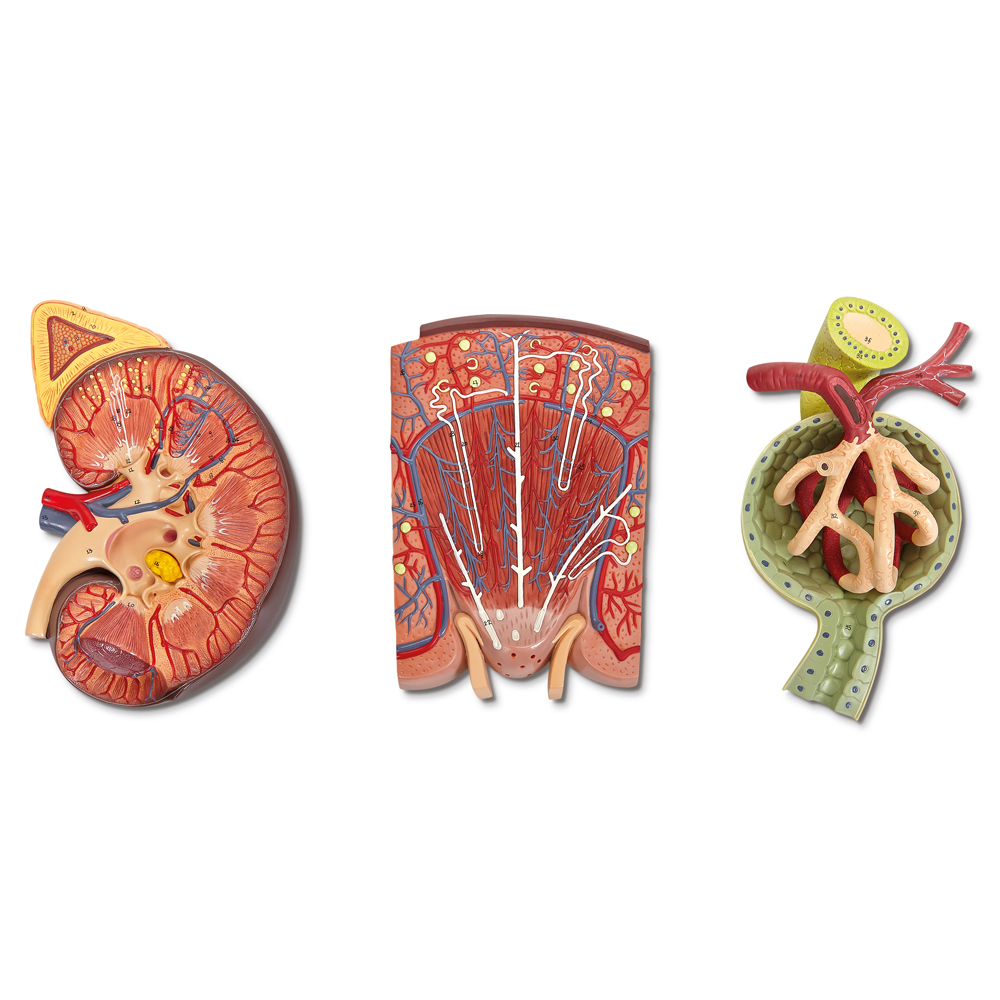
This life size, 2-piece model represents the right human kidney and adrenal gland. The anterior portion is removable to reveal the internal structures of the kidney. The renal artery and vein are shown, as well as the proximal end of the ureter.
Reproductive System
Torso Models

Life size. The Carolina® Human Dual Sex Torso Model with Open Back allows students to study many body systems in one full-sized anatomical model. Students can see the proximity of anatomical structures and view the body as a whole. The 22 removable pieces provide opportunities for more detailed observation of the internal structures of organs such as the heart and stomach. Male and female pelvic inserts are bisected to simplify study of the internal and external reproductive structures.

Life size. Torso features 28 parts, including open back with musculature, vertebral column, paravertebral nerve branches, and removable vertebra with section of spinal cord. One side of model is dissected to reveal skeletal musculature of head and trunk.
Models are a great way to introduce students to body systems and a quick and easy way to review before testing. If you don’t see what you need here, browse our complete line of models. Also, see our free body systems materials and human organs content with infographics and activities to use alongside models. For assistance selecting and caring for your models, we have details here—and don’t forget specialized cleaning solutions to ensure your models remain like new.
About The Author
Carolina Staff
Carolina is teamed with teachers and continually provides valuable resources–articles, activities, and how-to videos–to help teachers in their classroom.

